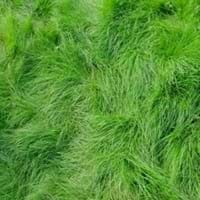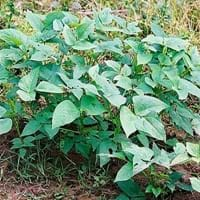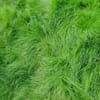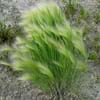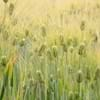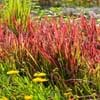Life Span
Perennial
Perennial
Origin
World/Pandemic, North America, Europe
Africa
Types
Lustrous Creeping Red Fescue, Rubra trichophylla, Rubra rubra
Yardlong Bean
Black-Eyed Peas
Catjang
Dixie Lee Pea
Number of Varieties
Not Available
Habitat
Wide range of ecological site
Fertile bottom land
USDA Hardiness Zone
2-7
Not Available
AHS Heat Zone
7 - 1
Not Available
Sunset Zone
A2, A3, 1a, 1b, 2a, 2b, 3a, 3b, 4, 5, 6, 7, 8, 9, 10, 14, 15, 16, 17, 18, 19, 20, 21, 22, 23, 24
A1, A2, A3, H1, H2, 1a, 1b, 2a, 2b, 3a, 3b, 4, 5, 6, 7, 8, 9, 10, 11, 12, 13, 14, 15, 16, 17, 18, 19, 20, 21, 22, 23, 24
Habit
Mat-forming
Not Available
Flower Color
Not Available
White, Pink, Lavender
Flower Color Modifier
Bicolor
Bicolor
Fruit Color
Non Fruiting Plant
White, Red, Green, Purple, Brown, Black
Leaf Color in Spring
Dark Green
Green, Purple
Leaf Color in Summer
Light Green
Green, Purple
Leaf Color in Fall
Dark Green
Green, Purple
Leaf Color in Winter
Tan
Green, Purple
Leaf Shape
Grass like
Deltoid
Plant Season
Spring, Summer, Fall, Winter
Spring, Summer, Fall, Winter
Sunlight
Full Sun, Partial Sun, Partial shade
Full Sun, Partial Sun
Type of Soil
Clay, Loam, Sand
Loam, Sand
The pH of Soil
Acidic, Neutral
Acidic, Neutral, Alkaline
Soil Drainage
Average
Well drained
Bloom Time
Early Summer, Summer, Late Summer
Indeterminate
Tolerances
Not Available
Drought
Where to Plant?
Ground
Ground
How to Plant?
From Rhizomes
Seedlings
Plant Maintenance
Medium
Medium
Watering Requirements
Needs 2-3 times watering per week
Average Water Needs
In Summer
Lots of watering
Lots of watering
In Spring
Moderate
Moderate
In Winter
Average Water
Average Water
Soil pH
Acidic, Neutral
Acidic, Neutral, Alkaline
Soil Type
Clay, Loam, Sand
Loam, Sand
Soil Drainage Capacity
Average
Well drained
Sun Exposure
Full Sun, Partial Sun, Partial shade
Full Sun, Partial Sun
Pruning
Prune grass to maintain level
Remove damaged leaves, Remove dead branches, Remove dead flowers, Remove dead leaves, Remove dead or diseased plant parts, Remove deadheads
Fertilizers
fertilize in fall
Any balanced general purpose fertilizer
Pests and Diseases
Billbugs, Dollar spot, Pythium blight, Red blotch, Red thread, White grubs
Nematodes, Red blotch
Plant Tolerance
Not Available
Drought
Flowers
Insignificant
Insignificant
Flower Petal Number
Single
Single
Foliage Texture
Fine
Medium
Foliage Sheen
Matte
Matte
Attracts
Bugs
Not Available
Allergy
Asthma
Legume allergy
Aesthetic Uses
Ground Cover
Not Used For Aesthetic Purpose
Beauty Benefits
Not Available
Not Available
Environmental Uses
Erosion control, Wildlife
Air purification
Medicinal Uses
No Medicinal Use
Diuretic, Stomachic
Part of Plant Used
Whole plant
Seedpod, Seeds
Other Uses
Used as Ornamental plant
Not Available
Used As Indoor Plant
No
No
Used As Outdoor Plant
Yes
Yes
Garden Design
Edging, Groundcover, Lawns and Turf, Mixed Border, Rock Garden / Wall
Edible, Herb, Vegetable, Tropical
Botanical Name
FESTUCA rubra
VIGNA unguiculata
Common Name
Red Fescue
Blackeyed Pea
Cowpea
In Hindi
Red Fescue
लोबिया
In German
Rotschwingel
cowpea
In French
fétuque rouge
niébé
In Spanish
festuca roja
caupí
In Greek
κόκκινο Φεστούκα
cowpea
In Portuguese
Red festuca
Koopea
In Polish
Kostrzewa czerwona
Koopea
In Latin
Red Fescue
Koopea
Phylum
Magnoliophyta
Tracheophyta
Class
Liliopsida
Magnoliopsida
Clade
Angiosperms, Commelinids, Monocots
Angiosperms, Eudicots, Rosids
Tribe
Not Available
Not Available
Subfamily
Not Available
Not Available
Number of Species
Not Available
Importance of Red Fescue and Cowpea
Want to have the most appropriate plant for your garden? You might want to know the importance of Red Fescue and Cowpea. Basically, these two plants vary in many aspects. Compare Red Fescue and Cowpea as they differ in many characteristics such as their life, care, benefits, facts, etc. Every gardener must at least have the slightest clue about the plants he wants to plant in his garden. Compare their benefits, which differ in many ways like facts and uses. The medicinal use of Red Fescue is No Medicinal Use whereas of Cowpea is Diuretic and Stomachic. Red Fescue has beauty benefits as follows: Not Available while Cowpea has beauty benefits as follows: Not Available.
Compare Facts of Red Fescue vs Cowpea
How to choose the best garden plant for your garden depending upon its facts? Here garden plant comparison will help you to solve this query. Compare the facts of Red Fescue vs Cowpea and know which one to choose. As garden plants have benefits and other uses, allergy is also a major drawback of plants for some people. Allergic reactions of Red Fescue are Asthma whereas of Cowpea have Legume allergy respectively. Having a fruit bearing plant in your garden can be a plus point of your garden. Red Fescue has no showy fruits and Cowpea has showy fruits. Also Red Fescue is not flowering and Cowpea is not flowering . You can compare Red Fescue and Cowpea facts and facts of other plants too.
